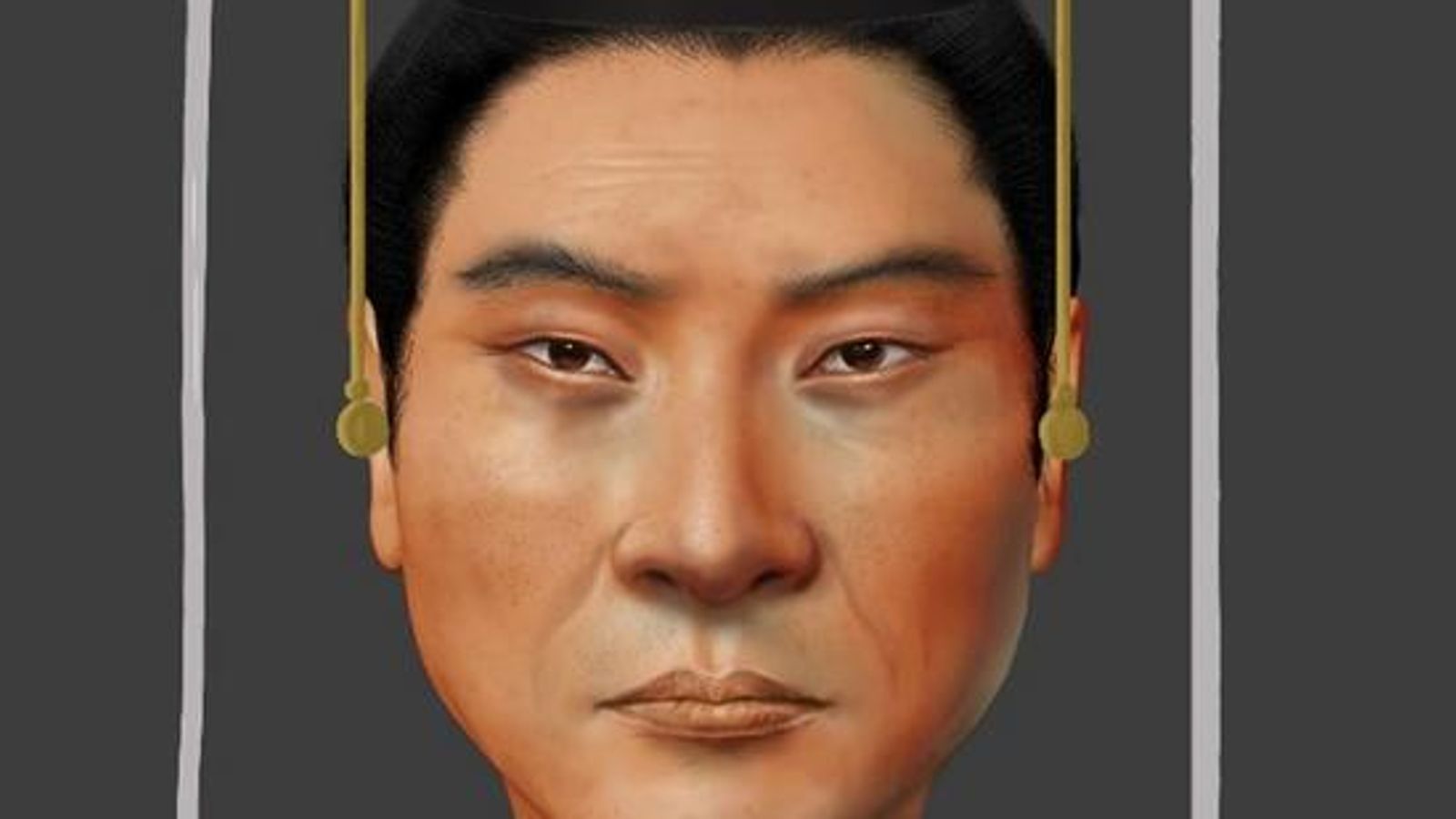Chinese researchers use DNA to reconstruct Emperor Wu's face as study sheds light on his death
Emperor Wu's tomb was found in 1996 with his almost-complete skull, helping researchers to build a picture of his face.

Researchers have used DNA to reconstruct the face of a Chinese emperor and shed light on what might have caused his death.
Emperor Wu was a ruler of the Northern Zhou dynasty in ancient China, reigning from 560 AD until 578, defeating the Northern Qi dynasty and unifying the northern part of the country.
The emperor belonged to a rarely-studied nomadic group called the Xianbei that lived in modern-day Mongolia and northern and northeastern China.
Almost 30 years after his tomb was discovered in northwestern China, researchers at Shanghai's Fudan University used DNA and his nearly-complete skull to reconstruct his face in 3D.
It shows the emperor had brown eyes, black hair and "dark to intermediate" skin. Researchers said the emperor "possessed a typical East or Northeast Asian appearance".
Pianpian Wei, the paper's co-corresponding author at Fudan University, said: "Our work brought historical figures to life.
"Previously people had to rely on historical records or murals to picture what ancient people looked like.
"We are able to reveal the appearance of the Xianbei people directly."
Emperor Wu died aged 36 and his son also died young, both for no obvious reason.
Some archaeologists thought Wu died from illness, while others argued he was poisoned by his rivals.
The researchers at Fudan, however, found he was at increased risk for a stroke.
It's a finding that is backed up by historical records describing him as having aphasia (a language disorder often caused by stroke), drooping eyelids and an abnormal way of walking.
There was not enough evidence to confirm a stroke as the cause of his death, but it might have been a factor.
The research is published in the journal Current Biology.
-sky news





